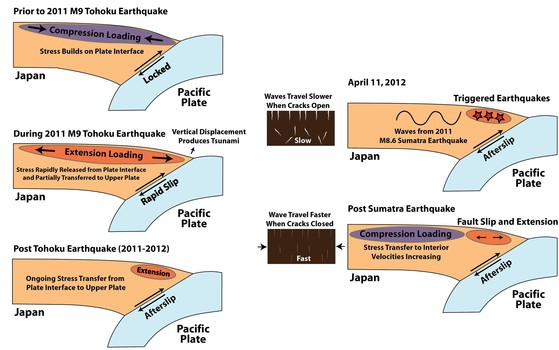An earthquake in the Indian Ocean may have triggered a series of events that led to the earthquake and tsunami that produced the Fukushima disaster. Andrew A. Delorey from the Los Alamos National Laboratory and colleagues are the first to provide coherent evidence that earthquakes can produce changes in the Earth’s crust that predict and cause earthquakes in distant regions of the Earth.
The researchers used global positioning data and seismic data to show that an earthquake in one region of the world produces a temporary but substantial change in the elasticity of the Earth’s crust. The change in elasticity allows the faults between tectonic plates in the Earth’s crust to slip past each other more easily and produce earthquakes. A large earthquake in one region of the world can produce small triggering events in a distant area of the Earth that precede and predict the occurrence of an earthquake.
The 1992 earthquake in the Indian Ocean had an effect on fault lines in Japan four days after the earthquake in the Indian Ocean. The relatively small dislocations of the Earth’s crust around Japan are thought to have eventually led to the massive earthquake that produced the tsunami that destroyed Fukushima. The proof of a previously existing theory with new techniques may make it possible to predict earthquakes that result from earthquakes in distant regions as far as years into the future. The earthquake in the Indian Ocean was not the only cause of the tsunami in Japan but was proven to be a contributing factor by the new analysis.















